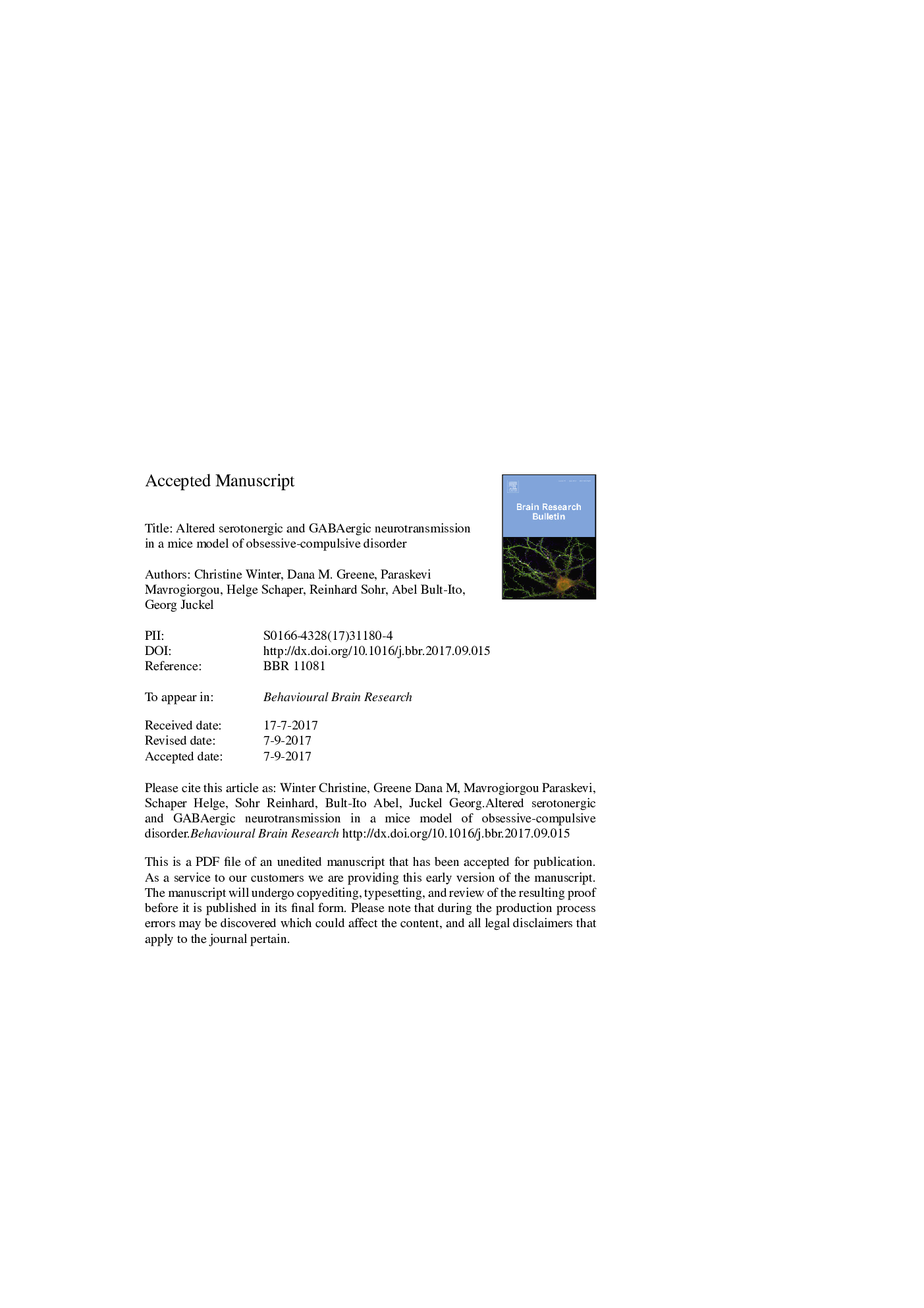| Article ID | Journal | Published Year | Pages | File Type |
|---|---|---|---|---|
| 5735272 | Behavioural Brain Research | 2018 | 33 Pages |
Abstract
There is ample evidence that obsessive-compulsive disorder (OCD) is based on reduced serotonergic function. Replicated bidirectional selection for thermoregulatory nest-building behavior in the laboratory house mouse (Mus musculus) resulted in compulsive-like, non-compulsive-like and randomly bred control mice that represent a non-induced animal model of OCD. The present study aimed at investigating the neurochemical patterns in specific brain regions of compulsive-like (HA) versus non-compulsive-like (LA) and normal (CA) mice. The neurochemical investigation of several brain regions of the corticostriato-thalamocortical circuity, i.e., nucleus caudatus (CPU), nucleus accumbens (NAc), globus pallidus (GP), hippocampus (HPC), amygdala (AM), ventral tegmental area (VTA) and substantia nigra (SN) was performed by electrochemical (serotonin and dopamine) and fluorescence (glutamate and GABA) HPLC detection. HA mice displayed significantly decreased 5-HT concentrations in the mPFC and LA mice displayed a significant increase in GABA concentrations in the mPFC. This supports the pathophysiological relevance of serotonin in the manifestation of OCD and adding to the construct validity of the non-induced mouse model of OCD.
Related Topics
Life Sciences
Neuroscience
Behavioral Neuroscience
Authors
Christine Winter, Dana M. Greene, Paraskevi Mavrogiorgou, Helge Schaper, Reinhard Sohr, Abel Bult-Ito, Georg Juckel,
